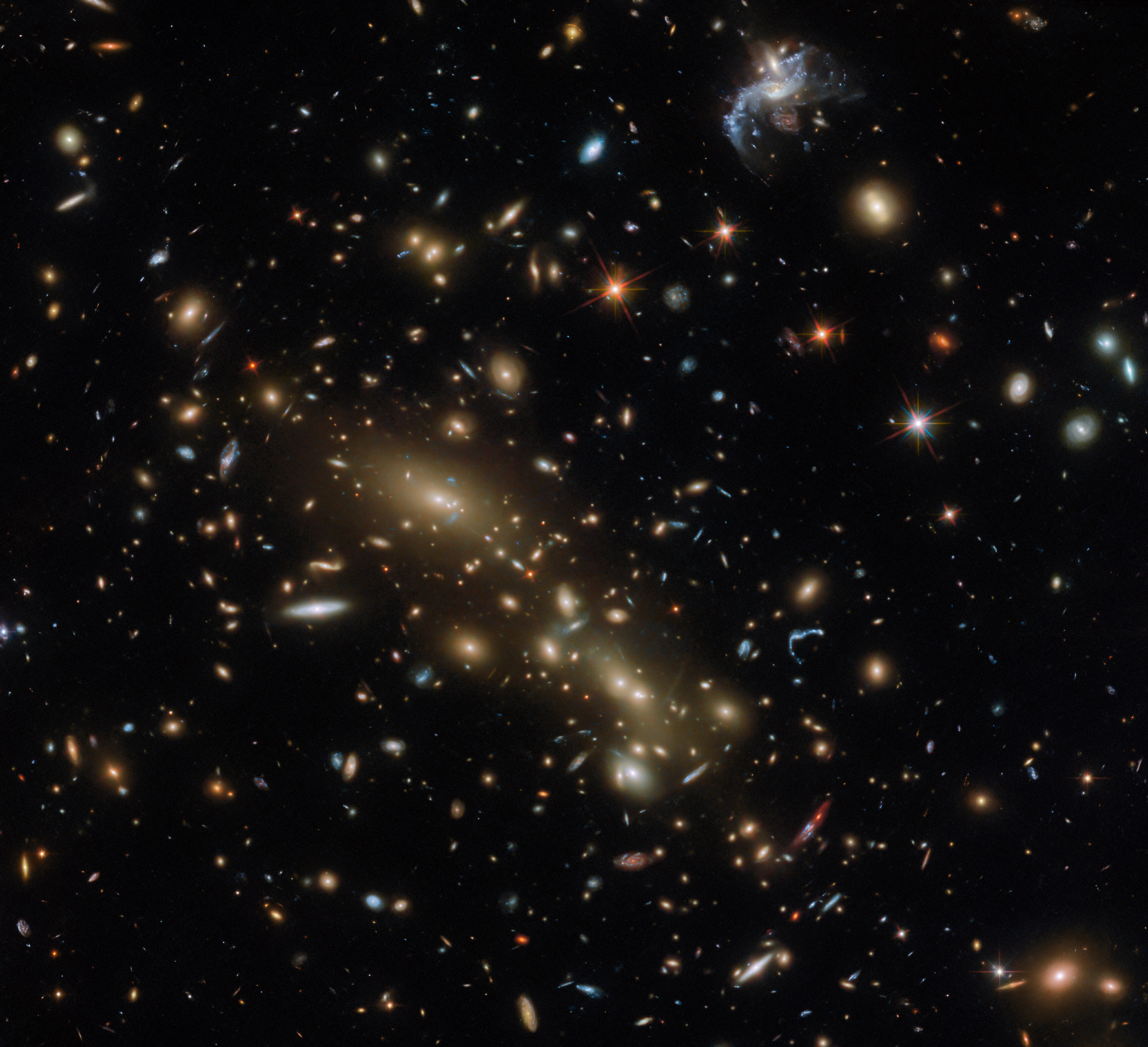Hubble Space Telescope spies multiple galaxy clusters masquerading as one (image)
Initially thought to be a single cluster, further research reveals Abell 3192 comprises two separate galaxy clusters.

The Hubble Space Telescope has scored a double whammy, as it captured two independent galaxy clusters grouped together in the same view.
The massive galaxy cluster conglomerate, originally labeled Abell 3192 as it was believed to only be one cluster, is located in the constellation Eridanus. The foreground cluster observed is located about 2.3 billion light-years from Earth, while the further group is roughly 5.4 billion light-years away, according to a statement from the European Space Agency (ESA).
"Like all galaxy clusters, this one is suffused with hot gas that emits powerful X-rays, and it is enveloped in a halo of invisible dark matter," ESA officials said in the statement releasing the Hubble image. "All this unseen material — not to mention the many galaxies visible in this image — comprises such a huge amount of mass that the galaxy cluster noticeably curves spacetime around it, making it into a gravitational lens."
Related: The best Hubble Space Telescope images of all time!
Gravitational lensing occurs when a large foreground object bends and magnifies light coming from more distant background objects. In this case, smaller galaxies behind the massive galaxy cluster grouping appear noticeably distorted into long, warped arcs around the cluster’s edges.
Abell 3192 was originally documented in 1989 during revisions to the Abell catalog of galaxy clusters, which was first published in 1958. At that time, Abell 3192 was believed to be a single cluster of galaxies. However, further research has revealed the galaxy cluster's mass was densest at two distinct points rather than one, according to the statement.
"It was subsequently shown that the original Abell cluster actually comprised two independent galaxy clusters," ESA officials said in the statement. "The two galaxy groups are thought to have masses equivalent to around 30 trillion and 120 trillion times the mass of the sun, respectively."
Breaking space news, the latest updates on rocket launches, skywatching events and more!
Taken using Hubble’s Advanced Camera for Surveys, the new image captures a cluster of smaller galaxies concentrated around two large elliptical galaxies, which are collectively known as MCS J0358.8-2955 and belong to the Massive Cluster Survey. MCS J0358.8-2955 is the more distant galaxy cluster, while the smaller galaxies near the center of the image belong to the Abell 3192 grouping that lies in the foreground.

Samantha Mathewson joined Space.com as an intern in the summer of 2016. She received a B.A. in Journalism and Environmental Science at the University of New Haven, in Connecticut. Previously, her work has been published in Nature World News. When not writing or reading about science, Samantha enjoys traveling to new places and taking photos! You can follow her on Twitter @Sam_Ashley13.

